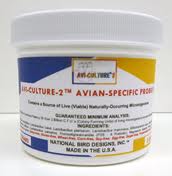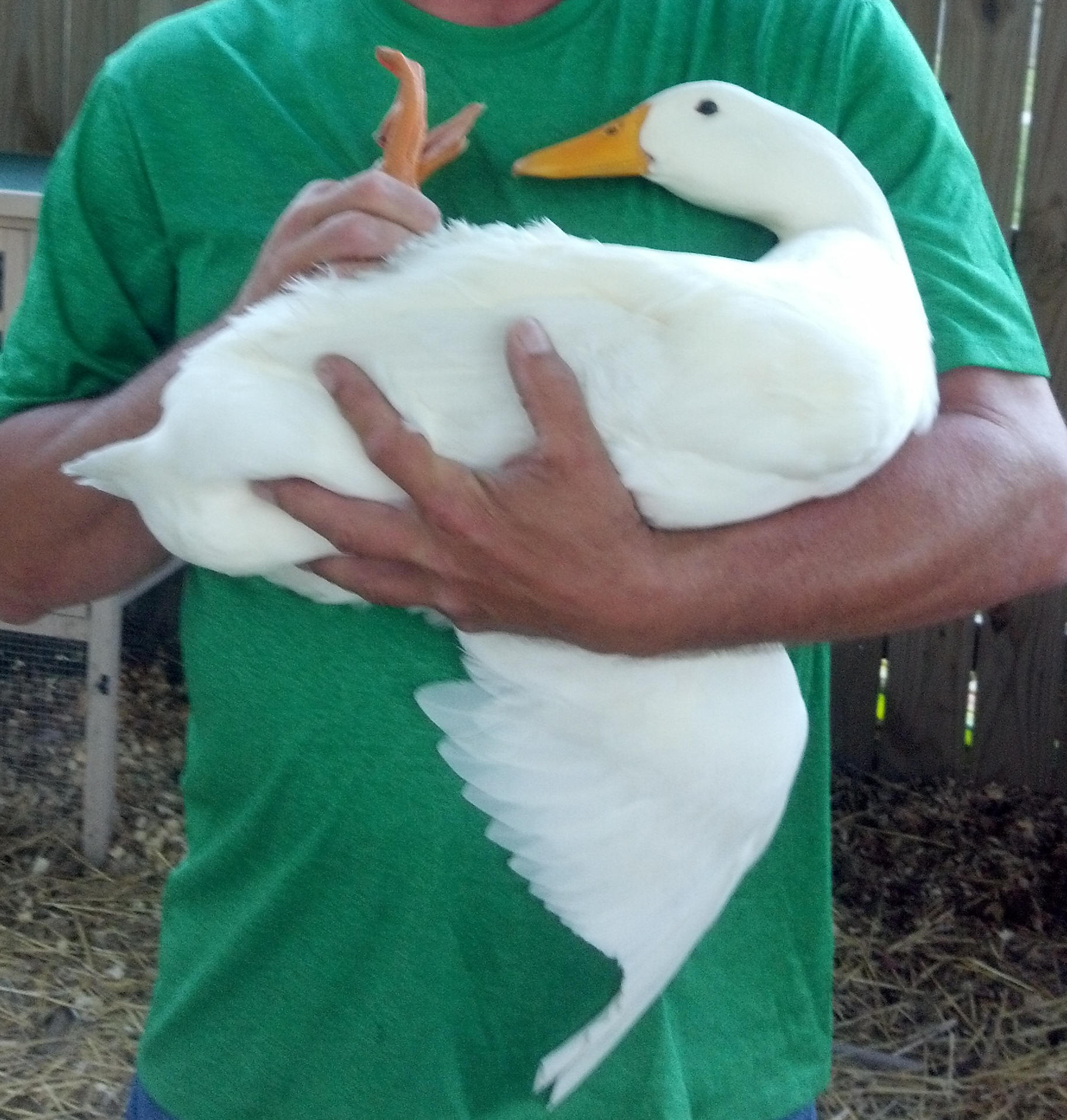DMSO
We received the following question in our in-box:"Dear Majestic,
A vet, who isn't my regular vet, recommended I use DMSO (dimethyl sulfoxide) on one of my limping ducks. I looked on your website for info about it, and didn't see anything, so am writing to ask if you've used it, do you recommend it for limping, and how do you use it if you do?"
While we have no experience using DMSO, we were instantly intrigued by this emailed question and began doing some online research. Here's what we found:
Non-prescription DMSO products are likely "industrial grade" and can contain unsafe impurities that can cause health issues; furthermore, the nature of DMSO is to quickly carry these impurities straight inside your pet's body.
Prescription DMSO is not FDA approved for the treatment of arthritis or joints, so any use of this nature is strictly off-label.
Do NOT use DMSO on your duck or goose unless a qualified waterfowl vet prescribes it and details its proper use on your pet first (covering the potency level, frequency of applications, length of use and expected results).
Potency:
For best permeation results, DMSO is not administered in full strength when applied topically. It is usually mixed 70% DMSO / 30% water.
Quality:
Applied topically, DMSO passes through the skin and can ferry other drugs (commonly anti-inflammatory medications) along with it, although this is not necessary.
Details:
DMSO is rich in sulfur, which is a major building block of collagen, the connective tissue of cartilage. The belief is that DMSO softens collagen, reduces swelling and relieves the pain of arthritis, but... this has not been proven.
DMSO is an antioxidant that is believed to reduce inflammation in conditions NOT caused by infection or tumor.
DMSO is believed to reduce pain by blocking peripheral nerve fibers. In humans, some people have reported immediate relief that lasts up to six hours, while others claim it only provides relief during actual topical administration. Meanwhile, patients with chronic conditions often didn't report experiencing positive results until six weeks or more (or not at all).
Side effects: headaches (esp. if doses are too high), skin irritation, dizziness, nausea, vomiting, diarrhea, constipation, respiratory issues, vision problems, and fowl (ha!) odor.
Health risks: DMSO can cause liver & kidney damage if used in the long term (when used on humans, testing is recommended every six months). It is known to disrupt body insulin levels and is unsafe for animals with pre-existing renal issues or diabetes.
Tips: Test DMSO topically on small area first because it can cause skin irritation (DMSO is not intended for use on feathered areas).
In conclusion, prescription DMSO is not a cure, but a treatment and there is insufficient evidence to date that it can actually help with your pet's joint or arthritis issues. If you do opt to give it a try, it should only be done under close vet supervision and in the short term to avoid risk of detrimental renal issues.
Thank you for your email and we hope this helps you in your decision making!
Figure 8 Wing Wrap
Since Lil Ms. Bee's radius bone has had some trouble mending (because she pulled her wing pin out too soon), we've been following our vet's instructions and keeping her wing wrapped in an effort to coax bone growth and healing.
To wrap Bee's wing, we used 2" x 2.2 yards of PetFlex flexible cohesive bandage. This type of bandage does not have any adhesive backing, because its mesh-like fabric sticks to itself (and can easily come apart again afterwards).
To apply the PetFlex bandage, you will be following a figure eight pattern. You want to be sure to avoid twisting the bandage at any poihnt--always keeping one side of the bandage facing inward, and the other side of the bandage facing outward. Also, you will want to keep the flexible bandage taught as you go.
1) Unrolling the bandage as you go, begin at the underside of your duck's (or goose's) wing. Then bring the bandage up and over the wing, keeping one edge of the bandage nicely tucked into the crook of the top of the wing--right near where it emerges from their body (their upper armpit).
2) Then, bring the bandage diagonally down and in front, over the wing, before sending it back behind the wing and out of sight again.
3) Then, the bandage comes up and over, back into sight again, near the base of the wing, where it meets their body (their lower armpit). Remember to keep one edge of the bandage nicely tucked into the crook of their wing where it meets their body--without crumpling any wing feathers. Be careful not to pinch feathers here, or it can cause discomfort.
4) Then, the bandage comes back in front of the wing again, heading diagonally downward and toward the bend or "elbow" of their wing.
5) Roll the bandage over their "elbow" and then send it back behind the wing and quickly over their wing and into sight again. You have now completed the FIRST figure eight around the wing.
Repeat the above steps until you have completed 4-5 figure eight patterns around the wing. Then, finish behind the wing and cut the bandage.
Gently press your hands and fingers over the bandaging to lock the mesh weave together. You want to do this all over, molding the fabric securely in place.
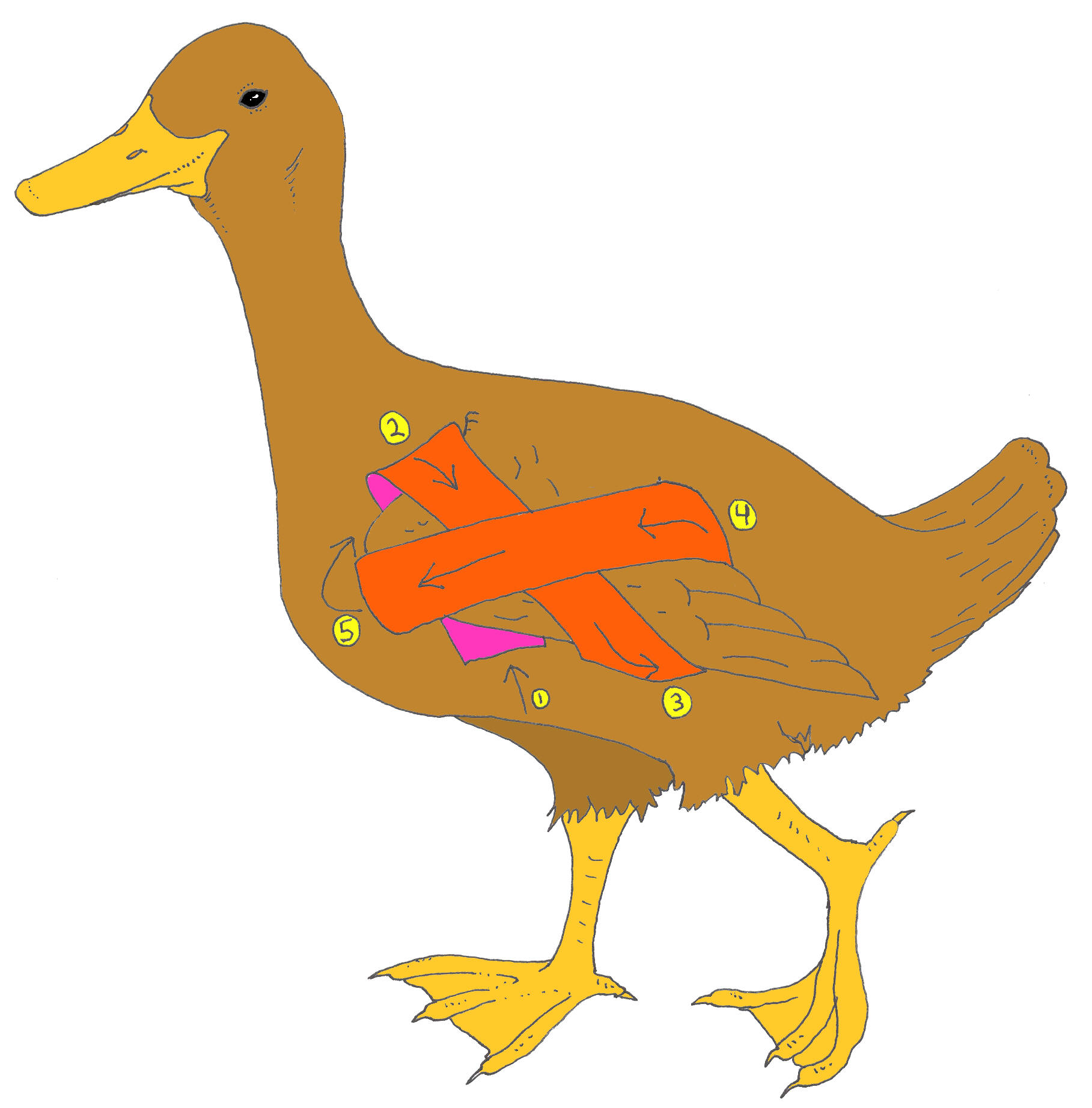
To secure the PetFlex bandage in place we used a roll of elastic adhesive bandage (2" width). The application of this adhesive bandage will make it more difficult for your duck or goose to unravel their PetFlex bandage.
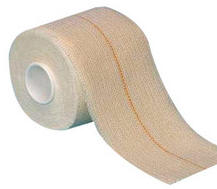
1) Cut a six inch piece of elastic adhesive bandage (this length may vary depending on the size of your duck. Geese will require a significantly longer bandage strip).
2) Tuck the center of the bandage strip behind the "elbow" of their wing, sticky side facing towards the flex bandage that's already in place. Avoid any direct contact with feathers as you then bring each end of the strip forward and over the wing. Rub gently all over to secure in place.
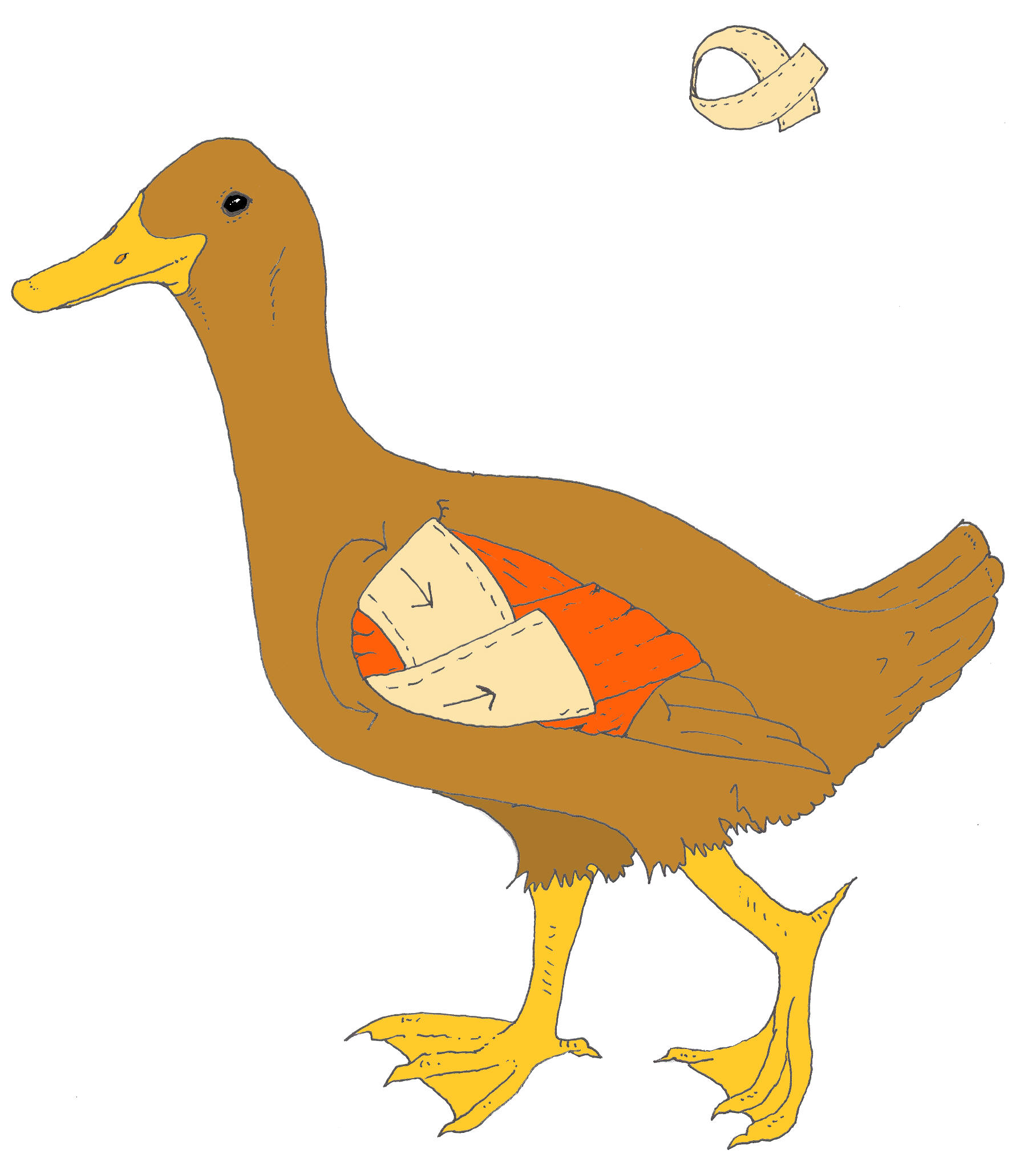
Both bandages can be cut away once-a-week using safe bandage-cutting scissors. Be careful not to cut any feathers!
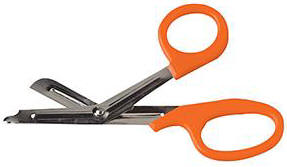
Allow your duck or goose about twenty to thirty minutes to move around freely without their bandaging to exercise their muscles a little (this will prevent excess muscle atrophy) and then reapply new bandaging.
CAUTION: You should NEVER wrap your pet duck or goose's broken wing except under the guidance of a qualified veterinarian. Their wing must be x-rayed and then bones need to be properly aligned prior to bandaging to avoid harmful and potentially permanent medical issues.
Living Feast Probiotics
Formally referred to as Manna Feast, the newly re-labeled "Living Feast" is the most powerful, nutrient dense nutritional product on the market today (and is actually intended for people). Each serving contains naturally occurring vitamins, minerals, antioxidant compounds, amino acids, enzymes, essential fatty acids, fiber, probiotics & phytonnutrients.
We administer this powder orally to sick ducks and geese by mixing 1/8 tsp. with a small amount of liquid (water or Ensure) and then dosing it via syringe, or it can simply be inserted into gel caps. This can be given up to twice a day for optimal results.
Our vet recommends giving probiotics to any of our ducks and geese receiving medication to protect their intestinal flora. It can also be administered during any stressful times to help preserve wellness: molting, periods of unusually hot or cold weather, changes in environment or routine, etc.
Visit www.food-based-nutrition.com to order this amazing probiotic supplement.

We like to use Living Feast alternately with avian probiotic Avi-Culture.
